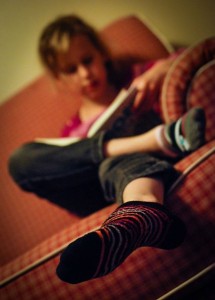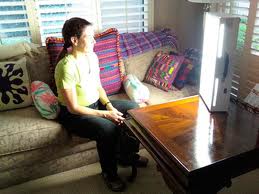As the name suggests, Seasonal Affective Disorder or SAD, if you like, is a special type of depression related to seasonal changes. Like many seasonal diseases, SAD begins and ends at a certain time every year. Most people start experiencing SAD symptoms during fall all the way into winter months. Fortunately, this disorder rarely affects people during spring or summer.

Seasonal affective disorder symptoms include moodiness and lack of energy, among other health problems. Therefore, you shouldn’t dismiss symptoms like these as “winter blues” or a seasonal funk that you have to deal with on your own. According to the latest Mental Health America statistics, SAD affects approximately 500,000 people in the U.S. every winter (between September and April) peaking between December and February. This disorder primarily affects individuals living in the northern and southern hemispheres, and rarely affects people living near the equator. Statistics also show that 75 percent of all SAD sufferers are women, and this disorder is highly prevalent between the ages of 18 and 30 years old.
Causes of SAD
Although health experts aren’t entirely sure what causes SAD, the disorder has been linked to a lack of sunlight. This causes two main problems:
- Lack of sunlight upsets a person’s biological clock, which is responsible for controlling sleep-wake patterns among other circadian rhythms.
- Lack of sunlight also causes problems with serotonin, the brain chemical that controls mood.
Seasonal Affective Disorder Symptoms
Main SAD symptoms include:
- Depression: Feelings of misery, hopelessness, despair, apathy, guilt and loss of self-esteem.
- Anxiety: Tension as well as the inability to cope/tolerate stress.
- Mood changes: Extreme mood swings.
- Sleep problems: Oversleeping, difficulty staying awake, disturbed sleep as well as early morning waking.
- Lethargy: Strong feeling of fatigue as well as difficulties following a normal routine.
- Overeating: Extreme cravings for sweet/starchy foods resulting in weight gain.
- Social problems: Irritability as well as a strong desire to avoid social events/contact.
- Sexual problems: Low libido and decreased interest in sex/physical contact.
How is SAD diagnosed?
A complete SAD diagnosis is done after a person has experienced the following symptoms for three consecutive winters followed by a complete remission of the symptoms during spring and summer. It is, however, a daunting task to diagnose SAD because the disorders exhibit nearly the same symptoms as other types of depression. Nevertheless, diagnosis is still possible. To diagnose SAD, your doctor will ask you/find out the following:
- If you have suffered from depression during the same period/season or felt better as a result of seasonal changes for a minimum of two years in a row.
- If you have symptoms occurring alongside SAD symptoms i.e. extreme hunger/cravings, oversleeping and gaining weight.
- If you are genetically predisposed to SAD i.e. if you have a close relative like a brother, sister or parent with SAD.
It is important to note that a blood test is required to ensure potential SAD patients are not suffering from other health problems that exhibit symptoms similar to SAD i.e. hypothyroidism (low thyroid). Your doctor also needs to perform a mental health assessment for an accurate idea of your feelings and how well you can reason, think and remember since such factors may exhibit symptoms that are similar to SAD.
Seasonal Affective Disorder Treatment

SAD is usually treated using medication, psychotherapy or light therapy (phototherapy) i.e. full spectrum lighting. Light therapy is one of the most effective treatments for SAD because it is caused by a variation in lighting that usually happens when seasons transition. Light therapy delivers full spectrum lighting to people to regulate their body’s natural systems. This helps people feel like they are getting the benefits of summer sun, even when it’s winter outside.
Light boxes are an effective method to treat SAD in the home environment. To get the same benefit in an office environment, you can add cost-effective filters to overhead lighting. These filters reduce the harsh light and glare from fluorescent lighting to give people the same effects as natural sunlight.
For more information on our high-quality filters, please see our products page.
Sources
- http://www.mentalhealthamerica.net/conditions/sad
- webmd.com/mental-health/tc/seasonal-affective-disorder-sad-topic-overview
